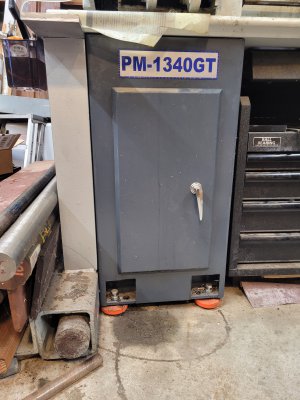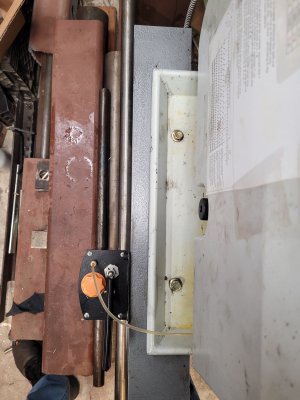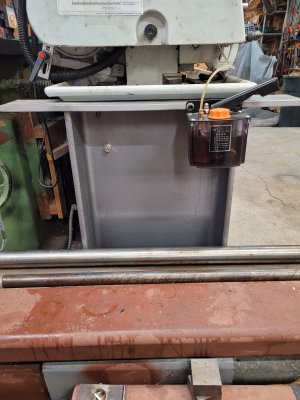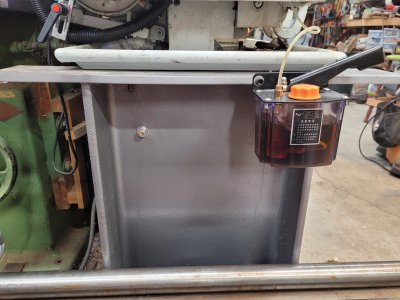- Joined
- Feb 13, 2017
- Messages
- 2,138
Waayyy back, when I went to a military "trade school", USCG EMA, Electrician as a teenager, we were taught a "rule of thumb" system that depended on judgement instead of some gauge that might or might not be available when a repair was made. Assuming a straight edge across the pulleys, could be as simple as a string pulled snug, depress the belt midways to about an inch. The amount of force required is based on thumb pressure. A big, herquy deck ape would tend to set the belt too loose, a "wimpy" navigator type would tend to set the belt too tight. In either case, it works out to "about" 10 pounds on a 3/8 inch belt.
It is a poor (very poor) practice to depend on motor weight to hold belt tension. When the motor bounces from load changes, the tension will vary widely. When I am mounting a motor on a base plate, I release the hold down setscrews and use the above system to judge the belt tension. Essentially the weight of the motor lifting by the belt being pressed "around" 10 pounds. A spring scale can be used but most experienced mechanics judge "that feels about right" to be sufficient. The motor weight screws are then tightened to that position.
Motor drive systems and mounting techniques will vary from machine to machine. And the judgement of a mechanic will vary from person to person. To attempt to quantify an intangable like belt tension depends on many factors. Too loose, it will slip and damage the pulleys and/or belt. Too tight will damage the bearings of the motor and/or the driven load. External factors bear a great deal, is the belt oily or greasy?!? Hot or very cold makes a great deal of difference. Is the belt new or is it a "git by"? To me, "that feels about right" is a judgement call that works.
Your MilageMayWill Vary
.
It is a poor (very poor) practice to depend on motor weight to hold belt tension. When the motor bounces from load changes, the tension will vary widely. When I am mounting a motor on a base plate, I release the hold down setscrews and use the above system to judge the belt tension. Essentially the weight of the motor lifting by the belt being pressed "around" 10 pounds. A spring scale can be used but most experienced mechanics judge "that feels about right" to be sufficient. The motor weight screws are then tightened to that position.
Motor drive systems and mounting techniques will vary from machine to machine. And the judgement of a mechanic will vary from person to person. To attempt to quantify an intangable like belt tension depends on many factors. Too loose, it will slip and damage the pulleys and/or belt. Too tight will damage the bearings of the motor and/or the driven load. External factors bear a great deal, is the belt oily or greasy?!? Hot or very cold makes a great deal of difference. Is the belt new or is it a "git by"? To me, "that feels about right" is a judgement call that works.
Your Milage
.





